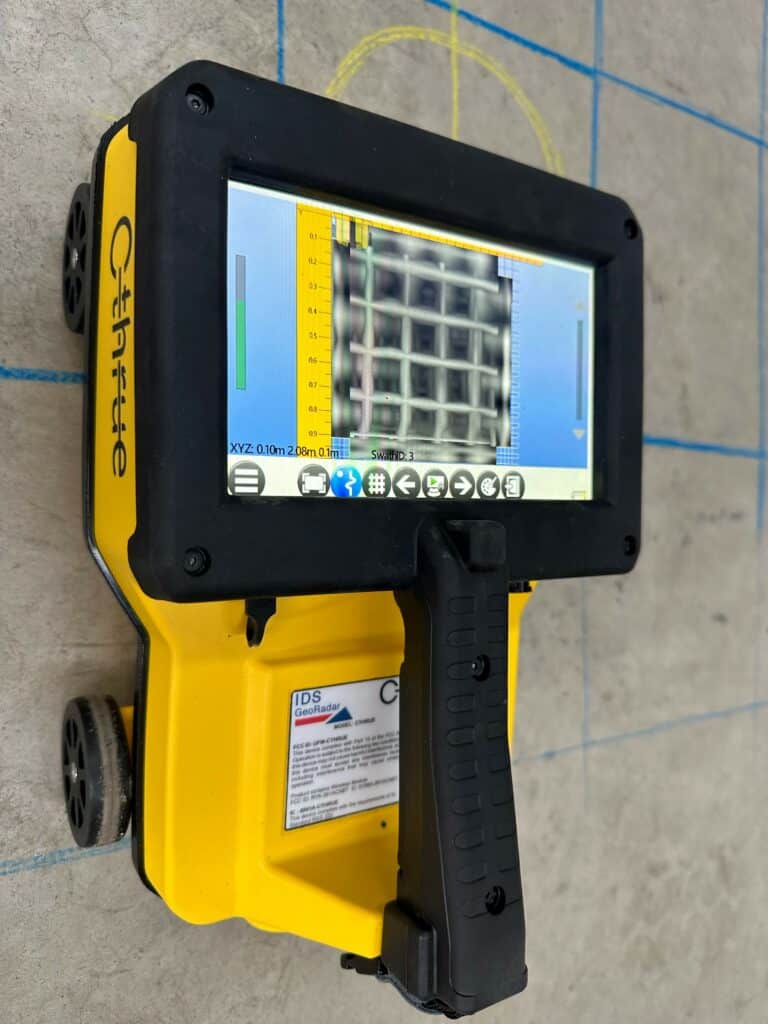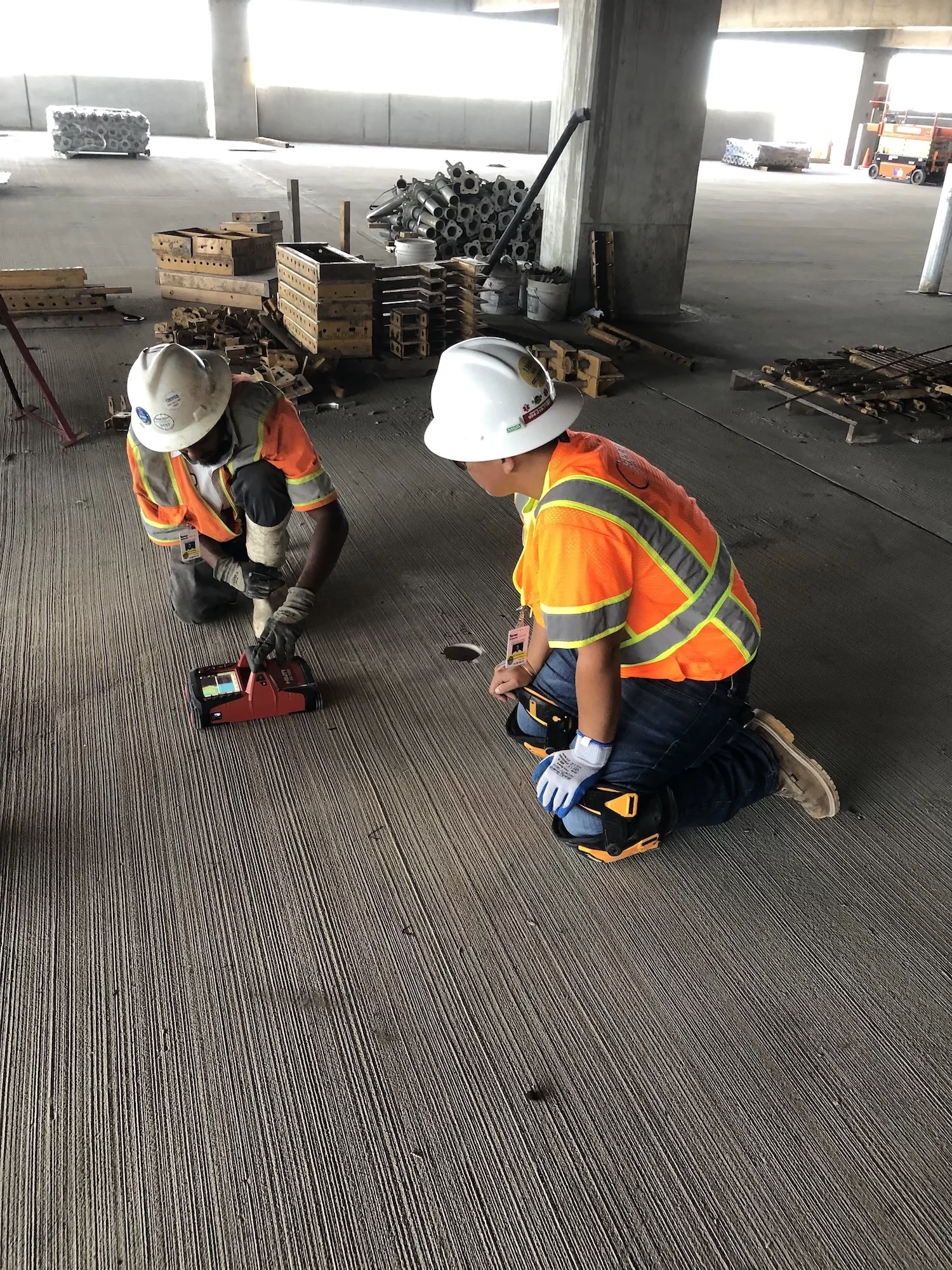The Significance of Professional Concrete Scanning Services
Wiki Article
Reveal the Transformative Power of Concrete Scanning in Optimizing Efficiency and Safety
Concrete scanning has become an important device in the building industry, using unmatched advantages in boosting job efficiency and guaranteeing safety standards. By making use of sophisticated technology, concrete scanning enables professionals to see beyond the surface area, discovering hidden intricacies that can impact the architectural stability of a structure. The transformative power of concrete scanning depends on its capacity to provide real-time data and detailed insights, transforming how jobs are prepared and executed. As we explore the details of this ingenious strategy, a world of possibilities opens up, showcasing a brand-new age of construction practices that prioritize precision and security.Value of Concrete Scanning
Making certain the architectural stability and safety and security of building and construction projects begins with the vital action of conducting comprehensive concrete scanning. Concrete scanning is a non-destructive technique used to detect and map subsurface components within concrete frameworks. This procedure is important in determining potential hazards, such as rebar, post-tension cables, and channels, that might be hidden within the concrete. By making use of innovative technologies like ground-penetrating radar (GPR) and electromagnetic induction, construction groups can precisely locate these elements without causing any type of damage to the framework.The value of concrete scanning can not be overstated, as it plays a vital duty in avoiding crashes, lessening task delays, and guaranteeing the long-term resilience of the building. By identifying potential threats prior to the construction phase starts, contractors can execute suitable precaution and make informed choices relating to the style and execution of the project. Additionally, concrete scanning aids in enhancing job timelines and spending plan by preventing unforeseen expenses and hold-ups that might develop as a result of unanticipated blockages within the concrete. Ultimately, buying extensive concrete scanning is a proactive technique that boosts both effectiveness and security in construction projects.
Exactly How Concrete Scanning Works
Concrete scanning runs as a vital device in building and construction projects by utilizing advanced technologies to discover and map subsurface aspects without creating structural damages. Ground Penetrating Radar (GPR) and Electromagnetic Induction (EMI) are two primary techniques made use of in concrete scanning. GPR jobs by producing high-frequency radar pulses right into the surface, which recuperate when they encounter subsurface things or spaces. The time taken for the signal to return suggests the deepness and place of the things. EMI, on the other hand, makes use of magnetic fields to recognize variations in product compositions, such as recognizing rebar or channels within concrete frameworks.Throughout the scanning process, the information accumulated is analyzed in real-time, allowing prompt recognition of prospective hazards or barriers beneath the surface area. By utilizing these innovative modern technologies, concrete scanning dramatically minimizes the danger of costly problems and injuries on construction sites.
Advantages of Concrete Scanning
Using sophisticated scanning modern technologies in building projects uses a plethora of advantages, boosting both effectiveness and security on-site. Among the primary benefits of concrete scanning is the capacity to detect and find ingrained items such as rebar, post-tension cords, and channels accurately. By recognizing look at here now these elements before drilling or reducing right into concrete structures, the danger of accidental strikes is significantly minimized, avoiding potential injuries to employees and damage to the framework itself. Furthermore, concrete scanning aids in planning and making better, as it provides specific information concerning the location and deepness of architectural components.
Study: Concrete Scanning Success

In one more instance, a building firm used 3D concrete scanning to assess the problem old concrete frameworks in a historic building. The detailed scans provided valuable insights right into the degree of deterioration and assisted prioritize maintenance initiatives effectively. By proactively addressing areas of problem recognized via scanning, the firm was able to prolong the life-span of the structure and make sure owner safety and security.
These situation researches highlight the transformative power of concrete scanning in improving efficiency, precision, and safety in building and construction projects.
Implementing Concrete Scanning in Projects
Applying advanced scanning modern technologies during construction projects has ended up being significantly important for enhancing accuracy and safety and security. By incorporating concrete scanning into job planning and execution, building and construction groups can determine potential risks, such as rebar or post-tension cable televisions, hidden within concrete structures. This aggressive technique go to these guys lessens the threat of mishaps, delays, and pricey rework, inevitably bring about much more effective job timelines and budgets.To implement concrete scanning efficiently, task managers need to team up very closely with skilled scanning experts to establish the most appropriate scanning strategies for the specific project demands. Involving scanning experts from the very early stages of a task makes it possible for the team to produce detailed scanning strategies that deal with vital locations of problem and ensure thorough data collection.
In addition, including concrete scanning into routine project workflows can streamline decision-making procedures, as real-time scan information offers immediate insights right into the problem of concrete frameworks - Concrete Scanning. This data-driven strategy facilitates educated analytic and enables groups to make changes quickly, fostering a culture of performance and security throughout the task lifecycle

Verdict
In final thought, concrete scanning plays an essential duty in boosting efficiency and security in building projects. By utilizing sophisticated modern technology to map and spot out underlying frameworks within concrete, this process assists to stop pricey blunders, guarantee structural honesty, and lessen risks on website. With the capability to discover hidden components and give precise information, concrete scanning proves to be an important device for maximizing project end results and taking full advantage of general success.Concrete scanning is a non-destructive technique made use of to discover and map subsurface aspects within concrete structures. Furthermore, concrete scanning helps in optimizing job timelines and budget by staying clear of unanticipated prices and hold-ups that might develop due visit the site to unforeseen blockages within the concrete. One significant situation research study includes a large-scale renovation job where concrete scanning played a vital function in guaranteeing task success.In another case, a building and construction company used 3D concrete scanning to analyze the problem of aging concrete structures in a historical structure. By integrating concrete scanning into task planning and implementation, building teams can determine potential dangers, such as rebar or post-tension cables, hidden within concrete structures.
Report this wiki page